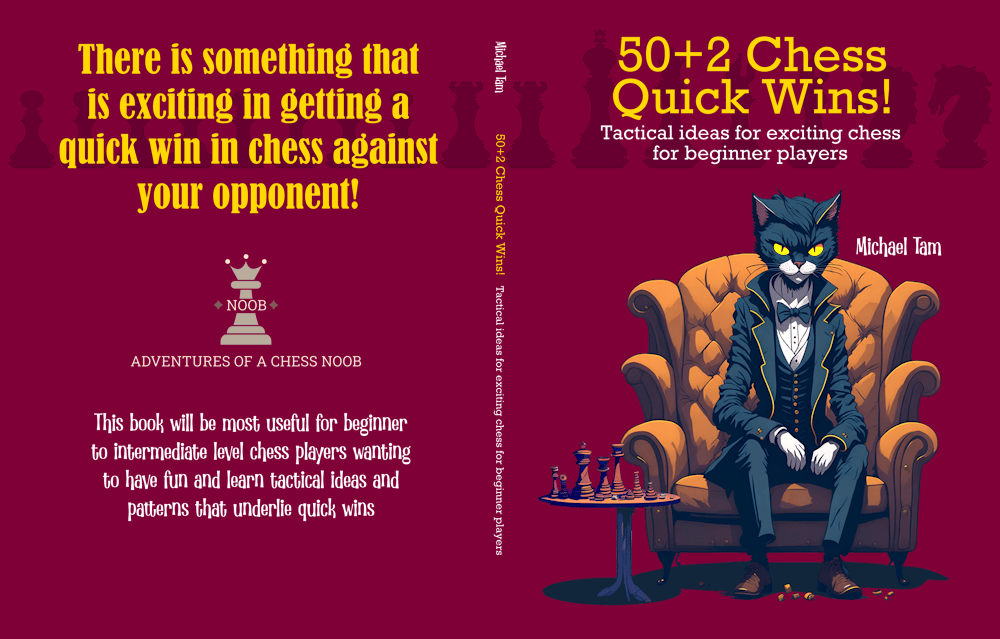
Scotch Game | The Death of Lady Macbeth ⚡ Quick Wins #91
#scotch #quickwins
“Out, damned spot; out I say. One, two, — why, then ‘tis time to do’t. Hell is murky. Fie, my lord, fie, a soldier and afeard? What need we fear who knows it when none can call our power to account? Yet who would have thought the old man to have had so much blood in him?”
— Lady Macbeth, in Macbeth, Act 5, Scene 1
This game was against my long-standing subscriber @Bogo-IndianaJones, who is substantially high-rated than me in rapid. I think that they enjoy playing tricky opening gambits and attacks, which will result in a fun game!
In this game, they had the white pieces and played the Scotch Game with a very tricky and aggressive attack, (1. e4 e5 2. Nf3 Nc6 3. d4 exd4 4. Ng5!?), an unnamed gambit line! I’d actually previously covered this in Quick Wins #24 and had dubbed it the Macbeth Gambit and so unfortunately for my mate with White, I had analysed it before and knew that it could be hard to play against. 😏
For the uninitiated, this line is potentially REALLY good for White with the Lichess community database demonstrating that White wins 56% to Black 42%, despite the evaluation being [-1.6]. Moreover, the most accurate and most common responses by Black still give an even better win ratio (😲) as it locks Black down a path where they must play very accurately against a massive attack – not easy!
![]()
A historical note:
This is an extremely rarely played line in competitive chess as at the masters level, it simply isn’t good for White. Nonetheless, we don’t see it in recreational and lower stakes games by historical chess masters either, for instance, it being used in simuls. The only historical game in the massive LumbrasGigabase is (Johnston — Hosmer, 1871, Cleveland USA). The game was played in the 2nd American Chess Congress. Johnston played the gambit and lost against Henry Hosmer (1837-1892), an American chess master who ultimately came second in the tournament.
![]()
The idea for White in the Macbeth Gambit is to sacrifice their knight by capturing Black’s f7-pawn, a bit like the Alien Gambit. In the position, the most common for Black (which according to the engine, is good) is (4… h6). However, White wins (72%) vs Back (27%) from the position, with the single most common line being (5. Nxf7 Kxf7 6. Bc4+ Ke8 7. Qh5+ Ke7 8. Qf7+ Kd6 9. Bf4+ Kc5 10. Qd5+ Kb6 11. Qb5#), having occurred around 90,000 times on Lichess! 😳
Below: how things go very wrong, very quickly with 4... h6, which is the most common response by Black against the Macbeth Gambit.
![]()
The most accurate response for Black according to the engine is (4… Be7), but White still wins the vast majority of games, in the way seen in Quick Wins #24. Simply, after (5. Nxf7 Kxf7 6. Bc4+ Ke8 7. Qh5+ g6 8. Qd5), White is winning down every single line with the single exception of (8… Bb4+), a move that is difficult to find!
The move to play, and what I played in this game was the (4… d5), which reverses the win ratio (White 36% vs Black 60%)! This move is rarely seen and is the eleventh most common move in the position! The logic is that with the pawn on d5, the centre is closed and White no longer has Bc4, which comes with check if the black king is on f7!
My mate with White responds with another tricky move (5. c3?!), inviting (5… dxc3 6. Nxc3), which would be good for them. However, I saw through this and there is no reason for me to open things up. Instead, with one of the light square diagonals to f7 closed with my d-pawn, White’s aggressive g5-knight has a nerfed attack and I want to draw them in – (5… h6 6. Nxf7? Kxf7)!
White’s plan was of course to sac their knight, draw my king to f7, and then to attack with Lady Macbeth (7. Qh5+). However, with the attack just doesn’t have enough “juice” and after (7… g6), everything is defended! White gives another check (8. Qf3+?!) but rather than deadly Macbeth Gambit, it’s giving Wayward Queen Attack vibes! White’s attacks with the queen are met with developing moves, with block check or win tempo on the queen.
On move 10, White’s (10. Qc3??) blunders the queen as Black has (10… Bb4!), pinning the queen to the king! If White captures the bishop with (11. Qxb4), Black then has (11… Nc2+) royal fork!
In the game, I didn’t actually see this beautiful tactic, but played something almost as good – (10… Nc6 11. exd5 Bb4)! Once again, Lady Macbeth is pinned to the king. Doomed, and having gone mad with emotional damage, White resigns the game. GG!



